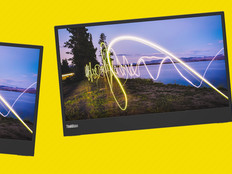Courts Partner for a Video Conferencing Exchange
South Dakota's Second Judicial Court Circuit has launched a grassroots campaign to entice court systems around the country -- and throughout the world -- to trade use of video resources as a more efficient and economical means of conducting court business.
The idea for the collaboration was hatched a couple years ago when the state's burgeoning RV population -- those folks in residence only during the summer months -- began requesting some sort of solution to address the need to appear in state for scheduled court hearings, according to Karl Thoennes, circuit administrator. While researching possible solutions, Thoennes' group was able to convince a court in Tallahassee, Fla., to lend its video conferencing capabilities free of charge so a resident living there during the winter could attend a hearing in South Dakota without hopping on a plane. In turn, the South Dakota Second Judicial Circuit promised to return the favor, and the concept of collaboration took off. "The idea was to save time and money and avoid travel," Thoennes says.
What started off as an informal arrangement between a handful of partners has morphed into a collaboration with reciprocal agreements to exchange video conferencing services with 35 sites -- mostly other courts, along with a couple of private providers. Those partners are located throughout the United States and Canada, and Thoennes says additions have come on board in England, Australia and even as far away as Tanzania.
As the collaborative video conferencing exchange has grown, so too has the need for formal policies. "In the beginning, it was like the Wild West -- simply a loose arrangement of someone just asking if they could use your system," he says. "As it develops, we have had to adopt policies and add structure."
The policy now specifies a reciprocal arrangement for all courts participating in the collaborative effort, where both sides trade use of video conferencing systems without any charge. In addition, there are different levels of participation, as some courts allow video conferencing to be used by attorneys only for events like depositions, while others greenlight use of the technology for a wider range of events, including hearings.
Thoennes and his colleagues are working to establish a system for how courts participate in the exchange. Today, interested parties simply contact the court administration office in Sioux Falls to provide their information, and the list is spread through an organic process. Thoennes is creating a more formal directory, which can be amended and modified and distributed around the court system nationwide to take the collaboration to the next step.
Yet even without the formal push, the Second Judicial Circuit in South Dakota has made the video conferencing collaboration part of its regular court routine, even using the technology to interview a candidate for a court management position. "It's really remarkable how much it's grown over the last year," Thoennes says. "We do an out-of-state video link at least once a week -- most recently, we took a remote deposition from a professor at a university in Portsmouth, England, who served as an expert witness."






